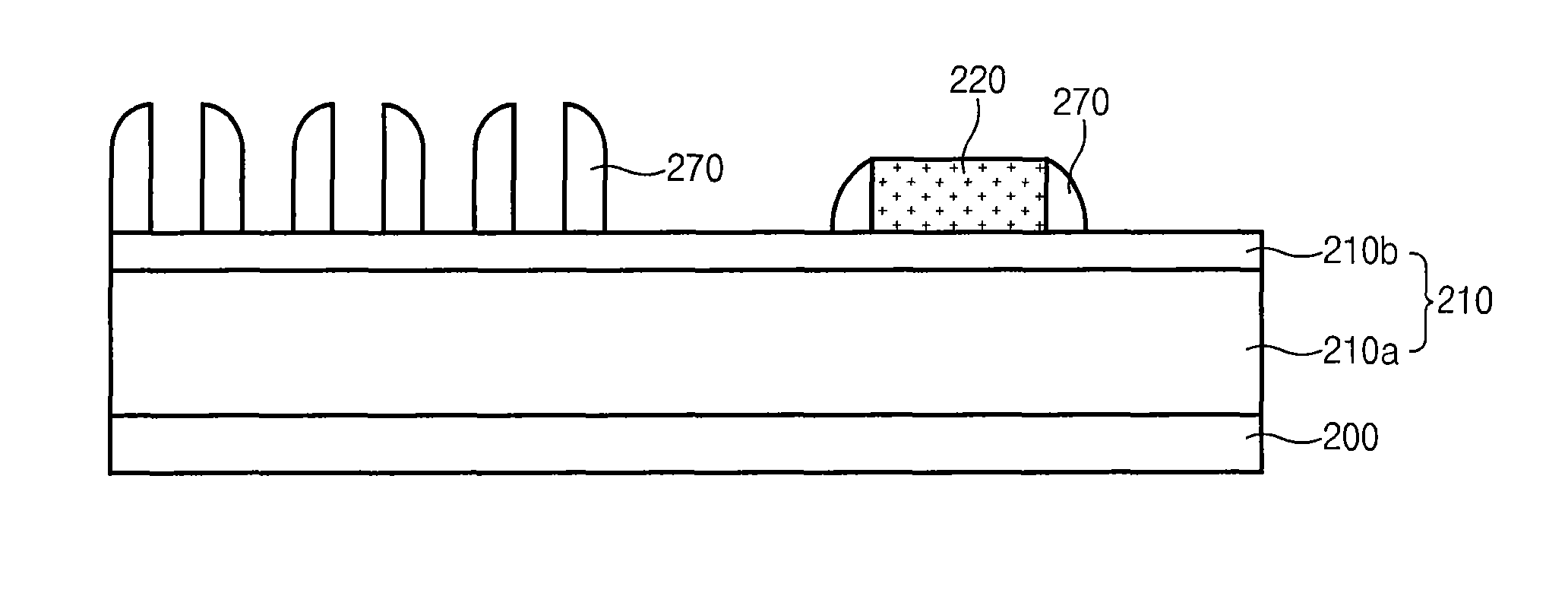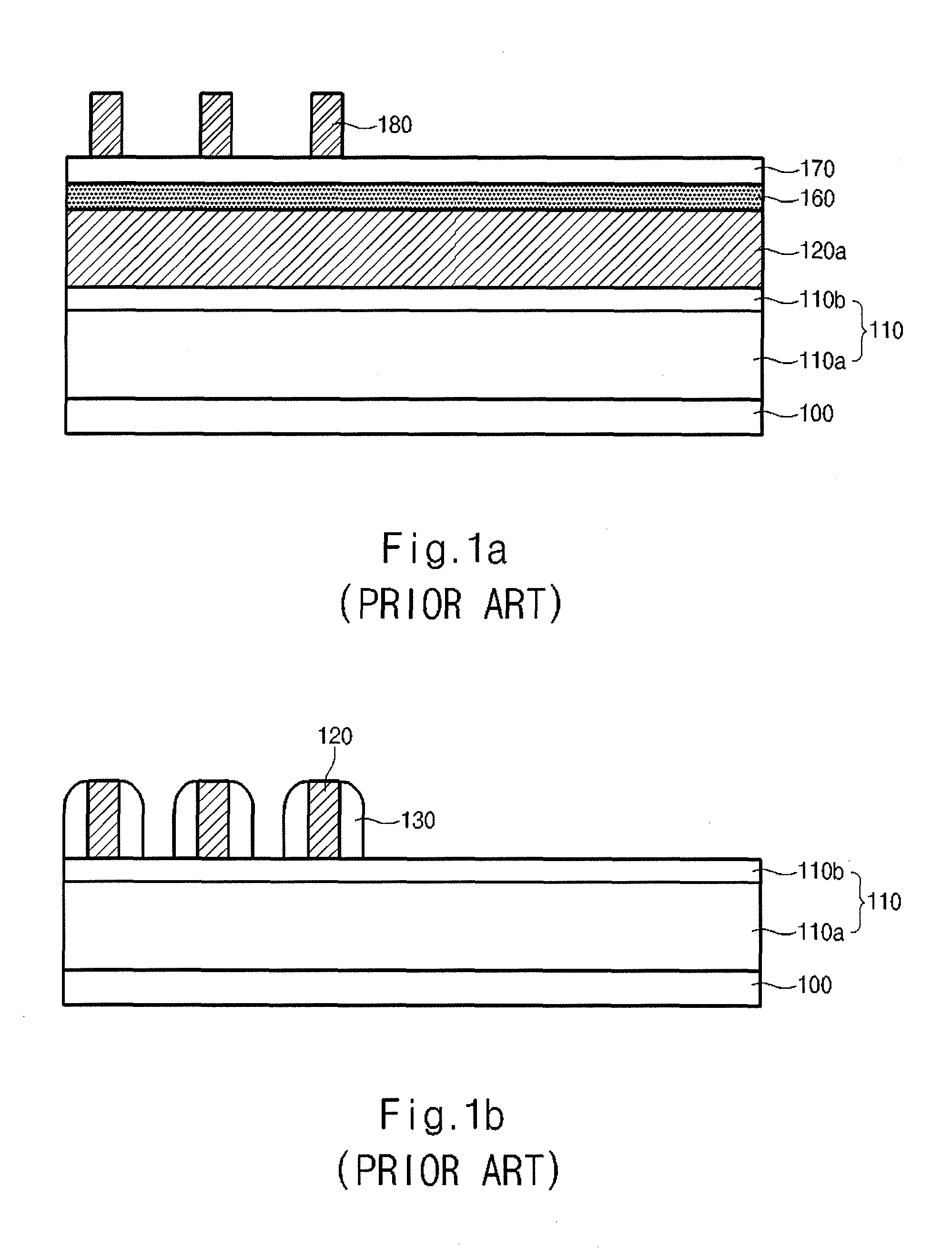Method for fabricating semiconductor device
a semiconductor and mask technology, applied in the field of semiconductor device manufacturing, can solve the problems of increased manufacturing cost, difficult to form the first fine photo-resist pattern defined in the mask, and difficulty in managing equipment, so as to improve the characteristic of the device, improve the profile and cd uniformity of the pattern for the pad, and prevent the scum of photo-resist pattern and pattern lifting
- Summary
- Abstract
- Description
- Claims
- Application Information
AI Technical Summary
Benefits of technology
Problems solved by technology
Method used
Image
Examples
Embodiment Construction
[0028]FIGS. 2a to 2g are cross-sectional diagrams illustrating a method for fabricating a semiconductor device according to an embodiment of the present invention. In the embodiment, the semiconductor device comprises a cell string connected to a plurality of control gates and a switching transistor for connecting a source selection line (SSL) and a drain selection line (DSL) at both ends of the cell string.
[0029]Referring to FIG. 2a, an etch target layer 210 is formed over a semiconductor substrate 200. A polysilicon layer 220a and a first BARC film 250a are formed over the etch target layer 210. A first photo-resist pattern 260a that defines a pattern for pad is formed over the first BARC film 250a. The etch target layer 210 has a deposition structure including a polysilicon 210a and a nitride film 210b.
[0030]Referring to FIG. 2b, the polysilicon layer 220a is etched with the first photo-resist pattern 260a as a mask to form a pattern 220 for pad that defines a gate of the switch...
PUM
| Property | Measurement | Unit |
|---|---|---|
| thickness | aaaaa | aaaaa |
| Anti-Reflection | aaaaa | aaaaa |
| critical dimension | aaaaa | aaaaa |
Abstract
Description
Claims
Application Information
 Login to View More
Login to View More - R&D
- Intellectual Property
- Life Sciences
- Materials
- Tech Scout
- Unparalleled Data Quality
- Higher Quality Content
- 60% Fewer Hallucinations
Browse by: Latest US Patents, China's latest patents, Technical Efficacy Thesaurus, Application Domain, Technology Topic, Popular Technical Reports.
© 2025 PatSnap. All rights reserved.Legal|Privacy policy|Modern Slavery Act Transparency Statement|Sitemap|About US| Contact US: help@patsnap.com



